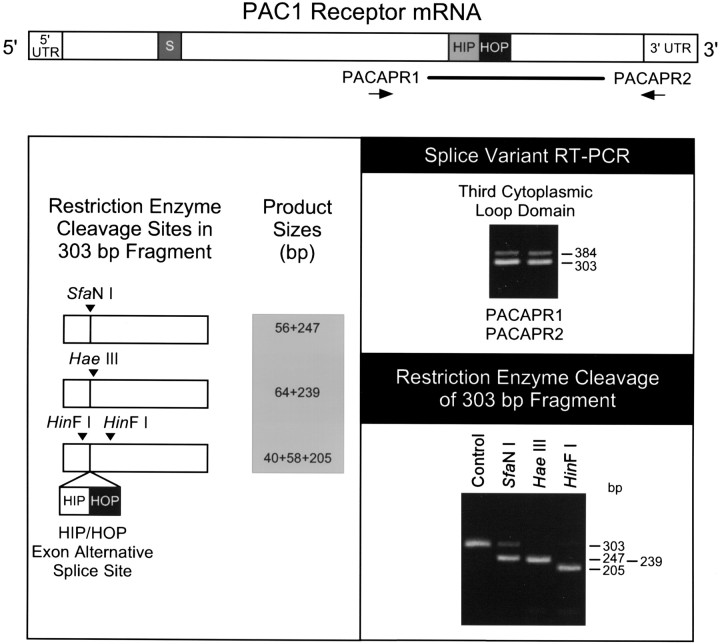Fig. 5.
PAC1 receptor variants in cardiac ganglia also result from alternative splicing within transcript regions encoding the third cytoplasmic loop. Reverse-transcribed cDNA templates from guinea pig atrial cardiac ganglia preparation RNA were used for PCR using primers PACAPR1 and PACAPR2, which span a segment of the PAC1 receptor transcript corresponding to the alternative splice site for the HIP and HOP cassettes within the third cytoplasmic loop (schematic, top). Two products were amplified: the predominant 303 base pair product corresponded to the receptor with neither the HIP nor HOP cassettes, whereas the 384 base pair product represented a one-cassette receptor variant (right panel, top). The 303 nucleotide product was isolated for diagnostic restriction endonuclease digestion with SfaN I, Hae III, or HinF I. The resulting enzymatic cleavage products corresponded to the predicted fragments for the receptor variant without either cassette (left panel; right panel, bottom). Control represents the undigested amplified 303 base pair product. The receptor mRNA schematic is described in Figure 4. Thick line, Region amplified using PACAPR1 and PACAPR2.

